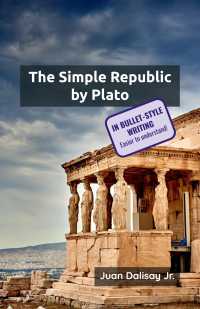Fermat's Principle of Least Time
6 minutes • 1204 words
Table of contents
The observations of Peregrinus were greatly extended not long before the time of Descartes, by William Gilbert[15] (b. 1540, d. 1603).
Gilbert was born at Colchester. After studying at Cambridge, he took up medical practice in London and was appointed physician to Queen Elizabeth.
In 1600, he published a work[16] on Magnetism and Electricity, with which the modern history of both subjects begins.
In magnetism, he made the capital discovery of why magnets set in definite orientations with respect to the earth. It means that the earth is itself a great magnet, having one of its poles in high northern and the other in high southern latitudes.
Thus, the compass was included in the general principle that the north-seeking pole of every magnet attracts the south-seeking pole of every other magnet, and repels its north-seeking pole.
Descartes tried[17] to account for magnetic phenomena by his theory of vortices.
A vortex of fluid matter was postulated around each magnet. The matter of the vortex enters one pole and leaves by the other. This matter was supposed to act on iron and steel by a special resistance to its motion afforded by the molecules of those substances.
The Cartesian system was crude in this and many other features. But it presented definite conceptions of molecular activity and applied them to so wide a range of phenomena that it:
- stimulated inquiry and
- prepared the way for the more accurate theories.
In its own day, it had great acceptance.
The confusion from the destruction of the old order was now ended by a reconstruction of knowledge in a credible and complete system.
Its influence lasted. Even at Cambridge, it was studied long after Newton had published his theory of gravity[18].
In the mid-18th century, Euler and two of the Bernoullis based the explanation of magnetism on the hypothesis of vortices.[19]
Descartes’ theory of light rapidly displaced the conceptions which had held sway in the Middle Ages.
Pierre de Fermat
The validity of his explanation of refraction was questioned by his fellow-countryman Pierre de Fermat (b. 1601, d. 1665)[20].
- Controversy ensued.
- This was kept up by the Cartesians long after the death of Descartes.
Fermat eventually introduced a new fundamental law, the celebrated Principle of Least Time[21]: “Nature always acts by the shortest course”.
- From this, he deduced the paths of rays of light and derive the law of reflection since the path of light between a point on the incident ray and a point on the reflected ray is the shortest possible consistent with the condition of meeting the reflecting surfaces.[22]
In order to obtain the law of refraction, Fermat assumed that “the resistance of the media is different". He applied his “method of maxima and minima” to find the path which would be described in the least time from a point of one medium to a point of the other.
In 1661, he arrived at the solution.[23]
He writes: “The result of my work has been the most extraordinary, the most unforeseefter having performed all the equations, multiplications, antitheses, and other operations of my method. I have found that my principle gives exactly the same proportion for the refractions which Descartes has established."
His surprise was all the greater, as he had supposed light to move ignore slowly in dense than in rare media, whereas Descartes had (as will be evident from the demonstration given above) been obliged to make the contrary supposition.
Although Fermat’s result was correct, and of high permanent interest, its principles were metaphysical rather than physical in character. Consequently, it was of little use for framing a mechanical explanation of light.
Robert Hooke
Descartes’ theory therefore held the field until the publication in 1667[24] of Robert Hooke’s Micrographia (b. 1635, d. 1703).
Hooke:
- was one of the founders of the Royal Society.
- was both an observer and a theorist
- made 2 experimental discoveries on light.
- The observation of the iridescent colours[25] which are seen when light falls on a thin layer of air between two glass plates or lenses, or on a thin film of any transparent substance.
- These are generally known as the “colours of thin plates,” or “Newton’s rings”.
- They had been previously observed by Boyle[26].
- Light in air is not propagated exactly in straight lines[27]. But that there is some illumination within the geometrical shadow of an opaque body.
- This observation had been published in 1665 in a posthumous work[28] of Francesco Maria Grimaldi (b. 1618, d. 1663), who had called it ‘diffraction’.
Hooke’s theoretical investigations on light were very important.
- It represented the transition from the Cartesian system to the fully developed theory of undulations.
He begins by attacking Descartes’ proposition, that light is a tendency to motion rather than an actual motion.
There is[29] no luminous Body but has the parts of it in motion more or less. This motion is exceedingly quick.
Some bodies like diamonds shine for a considerable time without being wasted away when rubbed or heated in the dark. It follows that whatever is in motion is not permanently lost to the body.
Therefore, the motion must be of a to-and-fro or vibratory character. The amplitude of the vibrations must be exceedingly small, since some luminous bodies eg, the diamond again) are very hard, and so cannot yield or bend to any sensible extent.
The condition associated with the emission of light by a luminous body is a rapid vibratory motion of very small amplitude.
Hooke asks: How does light travel through space? What is the trajection of this motion through the interposed pellucid body to the eye?
- It must be a body susceptible and impartible of this motion that will deserve the name of a Transparent
- The parts of such a body must be homogeneous, or of the same kind.
- The constitution and motion of the parts must be such that the appulse of the luminous body may be communicated or propagated through it to the greatest imaginable distance in the least imaginable time, though I see no reason to affirm that it must be in an instant.
- The motion is propagated every way through an Homogeneous medium by direct or straight lines extended every way like Rays from the centre of a Sphere.
- In an Homogeneous medium, this motion is propagated every way with equal velocity.
Every pulse or vibration of the luminous body will generate a Sphere, which will continually increase and grow bigger. This is like the waves or rings on the surface of the water swelling into bigger circles around the point where a stone was sunk.
All the parts of these Spheres undulated through an Homogeneous medium cut the Rays at right angles."
Here we have a fairly definite mechanical conception. It resembles that of Descartes in postulating a medium as the vehicle of light.
But according to the Cartesian hypothesis, the disturbance is a statical pressure in this medium, while in Hooke’s theory it is a rapid vibratory motion of small amplitude.
Hooke introduces the idea of the wave-surface, or locus at any instant of a disturbance generated originally at a point. It is a sphere, whose centre is the point in question, and whose radii are the rays of light issuing from the point.






